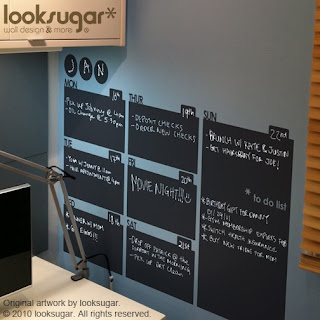Usually the first thing that comes to mind when making a schedule is mapping out what you are going to do each day during specific times. This works great for a lot of people, and many planners are set up to work with this method. By all means, if this works for you then go for it.
However, there is another way. Lots of creative people have a hard time working within this rigidity and may find it easier to set up a schedule that maintains flexibility and spontaneity. A more flexible schedule may also work for small business owners as their daily tasks change from day to day and sometimes hour to hour.
In order to set up a flexible schedule that still focuses you and allows you to use your time wisely, you need to think about what tasks you do best at what times of the day. For instance, if part of your work includes writing and you do that best during the morning, then writing needs to be part of your morning routine. If you write better at the end of the day, then it needs to be included in your later time block.
You may wish to think of your schedule more as a routine for getting things done, and maximizing what you do best when. My routine consists of 4 daily time blocks, and my transition times are when I eat meals. I have a list of possible things to do during those times depending on what I am motivated to do each day. Here is what my routine looks like:
Early Morning:

- Kids ready for school
- Coffee
- Writing
- Correspondence
Transition: Breakfast
Late Morning:
Package orders
Work on outstanding orders
Clean work spaces
Inventory supplies
Order supplies
Outside cutting and other outside work (spring/summer)
Transition: Lunch
Early Afternoon:
Create new product
Prep materials for product
Outside cutting and other outside work (fall/winter)
Transition: afternoon snack, children arriving home
Evening:
Correspondence
News
Networking
New product brainstorming
Sourcing new supplies
As you can see, there are not specific activities in my routine. However, most activities that I do will fall into one of these time frames, so on a daily basis I can extend the times I work in each block if needed. There are also times when naturally one activity will require more time and I allow myself to adjust as necessary.
Because my transitions are around things that are done daily, no matter what, it is easy for me to follow the cues of when it is time to change directions so that days are not too heavy in one area versus another.
If you are still having a hard time being productive, then make a list of general things that you can do and which category they fit in. This will help prevent the feeling of "I don't really feel like doing that today ... what else can I do?"
 My secondary list looks something like this:
My secondary list looks something like this:Early Morning
Tweet
Visit groups
Late Morning/Afternoon
Create target for readiness for shows/shop
Work on things already prepped
Cut fabric and felt
Photograph
when all else fails - clean house
Afternoon/Evening
Look for advertising opportunities
paper folding
meal planning
shopping lists
Please note that I may not do everything on my routine each day, and it changes based on upcoming events and outstanding orders. However, by writing down and mapping out my days I have allowed myself to think about what I do best at what time of day. I have also been able to get ahead with things that I was behind on. Especially writing, because since it isn't usually the most pressing thing on my list, then I would put it off to get the more pressing things done first. Which usually left me writing at the end of the day when I felt drained and not inspired. By giving myself permission to write early in the morning I am able to maximize the time of day when I do it best and that usually motivates me to perform the tasks later in my day even better.
I'm not sure what I will talk about next week! Please leave a comment to tell me what time management issues you are having!













